Technology
Mini Magazine
- Sunday, April 30, 2023 21:04 (GMT+7)
- 21:04 4/30/2023
The twin spacecraft Voyager 1 and Voyager 2 continue to explore the universe 45 years after launching from Earth and 22 light hours away from the planet.
Voyager 2 was launched from Cape Canaveral Space Launch Complex (USA) on August 20, 1977, and its twin brother, Voyager 1, was launched about 2 weeks later. While Voyager 1 focused on Jupiter and Saturn, Voyager 2 visited both planets, plus Uranus and Neptune. Voyager 2 is also the only human instrument to explore these two planets in the 20th century.
In November 2018, NASA announced that the spacecraft had crossed the outer edge of the Solar System, a boundary Voyager 1 had crossed in 2012.
Both Voyager 1 and 2 are exploring “interstellar space,” the space between different star systems. Viewers can track the spacecraft’s orbits, which are updated every five minutes, using the NASA Eyes on the Solar System app. Distance and velocity are updated in real time.
Tools That Still Work After 45 Years
Voyager 1 and Voyager 2 are currently about 23 billion kilometers from Earth. Since Voyager 2 was intended as a backup for Voyager 1, the two spacecraft have the same design and 10 scientific instruments. To date, each spacecraft still has 4 of those instruments in operation.
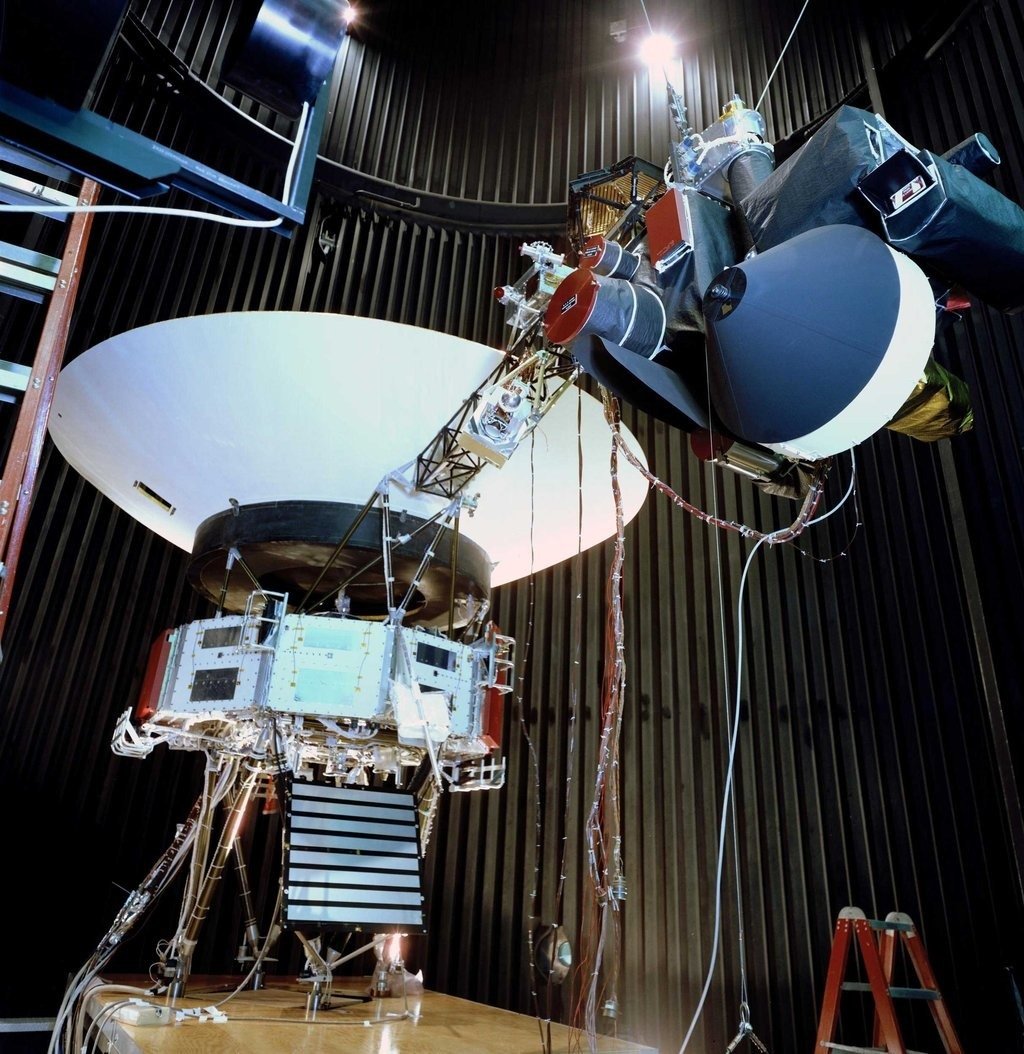 |
A test model, displayed in a space simulation chamber at a NASA laboratory in 1976. This is a replica of the two Voyager space probes launched in 1977. Photo: NASA/JPL-Caltech. |
The first is the Cosmic Ray Subsystem (CRS), which looks for high-energy particles, often found in the intense radiation fields surrounding some planets like Jupiter. These particles pass through the CRS and leave a telltale sign that they have been there.
This instrument provides information on the energy content, origin, acceleration, and dynamics of cosmic rays in the galaxy, and helps to understand the nucleosynthesis of elements in cosmic ray sources. The CRS is the instrument that helped the Voyagers measure the particle charges in the magnetospheres of Jupiter, Saturn, Uranus, and Neptune.
Low-Energy Charged Particle (LECP) is a tool that can be visualized as a piece of wood, and the particles it records are like bullets. The faster the bullet travels, the deeper it penetrates the wood, and the LECP reveals the speed of the particles. The number of “bullet holes” over time reveals how many particles are from the solar wind and from planets, while the direction the bullets leave in the wood reveals the direction the particles are traveling.
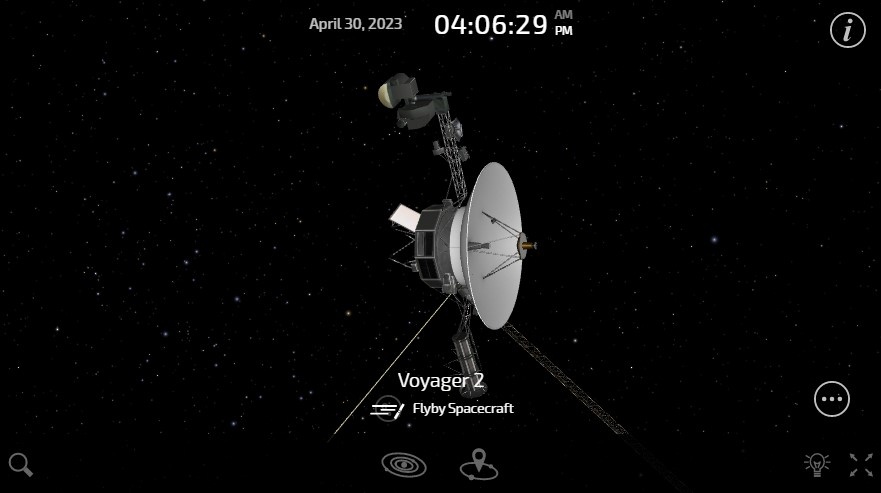 |
Voyager 2 simulation via NASA's real-time live tracking application. Photo: NASA . |
The magnetometer (MAG), whose primary mission is to measure changes in the Sun's magnetic field over distance and time, to determine whether each planet has a magnetic field and how its moons interact with those fields.
Finally, the Earth communication instrument, the Radio Astronomy (PRA) and Plasma Wave System (PWS) with antennas forming a V shape. The PWS covers the frequency range from 10 Hz to 56 kHz, while the PRA receiver has two frequency ranges, from 20.4 kHz to 1300 kHz and from 2.3 MHz to 40.5 MHz.
What have the 2 Voyager spacecraft done?
NASA once expected the two Voyager missions to last five years, and now they have been operating for 45 years and continue to collect valuable scientific data from the farthest reaches of space that humans have ever reached.
The two spacecraft have shown how interstellar space interacts with the solar wind, a stream of charged particles released by the Sun. Voyager has also provided data on the heliosphere, a kind of protective bubble around the Solar System.
The heliosphere is created by the solar wind and shaped by the conditions of interstellar space. The boundary of the Solar System – where the solar wind ends and interstellar space begins – is called the heliosphere.
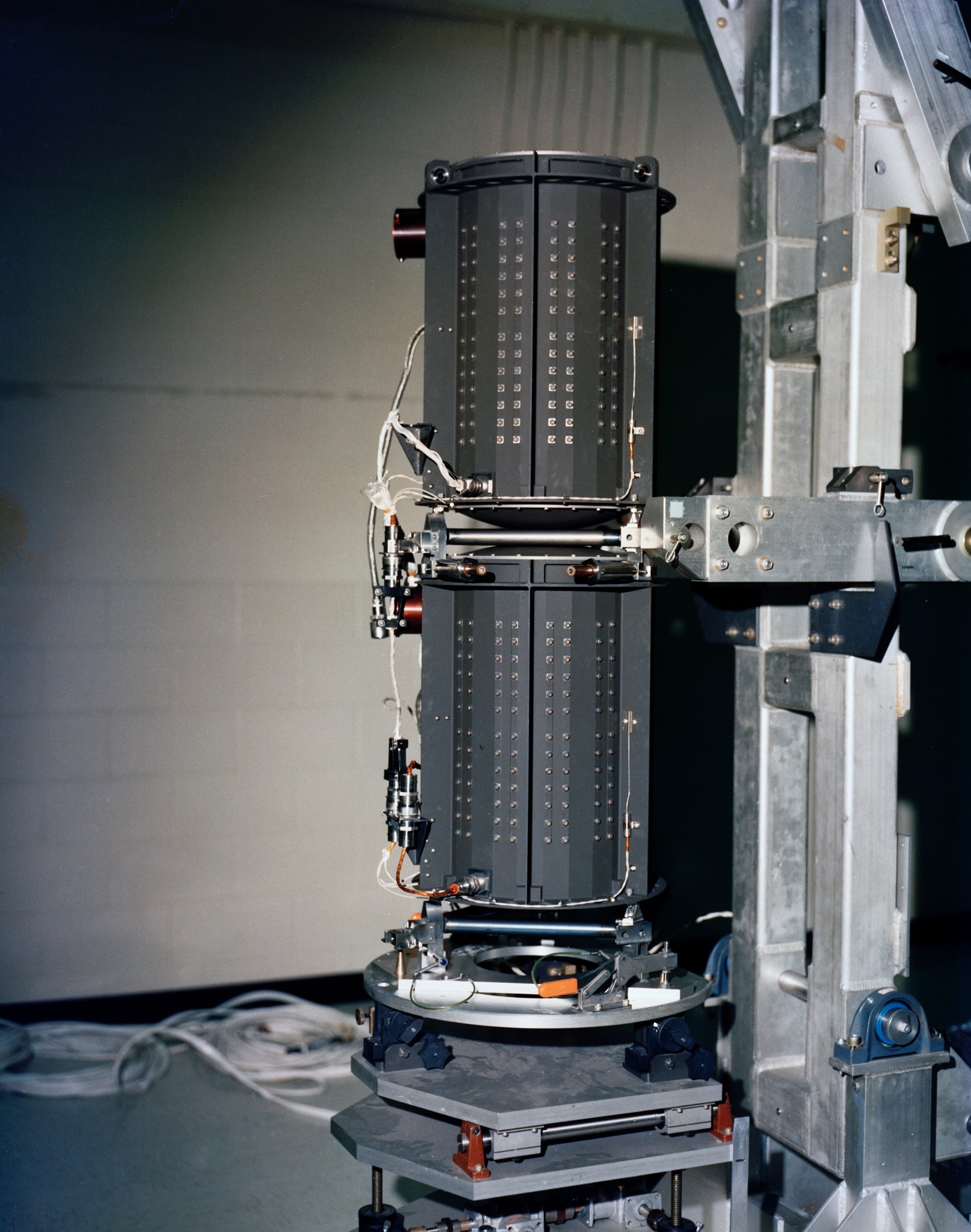 |
Each of NASA's Voyager probes is equipped with three radioisotope thermoelectric generators (RTGs), pictured here. RTGs power the spacecraft by converting heat generated by the decay of plutonium-238 into electricity. Photo: NASA/JPL-Caltech . |
NASA says the Voyager spacecraft has given researchers new information about interstellar space. For example, they discovered that cosmic rays are about three times stronger outside the heliosphere than deep inside it.
Scientists combined Voyager's observations with data from newer missions "to get a more complete picture of the Sun and how the heliosphere interacts with interstellar space," NASA said.
Nicola Fox, director of the solar physics division at NASA headquarters in Washington DC, said Voyager provided information about the Sun's influence across our entire solar system.
Each Voyager spacecraft is powered by a thermoelectric system that contains plutonium. As the plutonium decays, the heat output decreases and the spacecraft lose power. To compensate for this, NASA says it has turned off all non-essential systems, including heaters that protect the instruments from the harsh cold of space.
But the space agency reports that despite turning off its heaters in 2019, some instruments are still operating. NASA scientists are still unclear why Voyager continues to operate at temperatures far below what it was originally designed to withstand.
“After 45 years of continuous space exploration, Voyager 1 and 2 continue to provide humanity with observations of unexplored territory,” said Linda Spilker, a scientist at NASA’s Jet Propulsion Laboratory.
Big Questions - The Universe
The book deals with fundamental issues in natural science, in the form of discussing 20 questions about astronomy and the universe such as: What is the universe? How big is the universe? Why do planets always orbit?...
Hoang Nam
spaceship sun earth space
You may be interested in
Source link


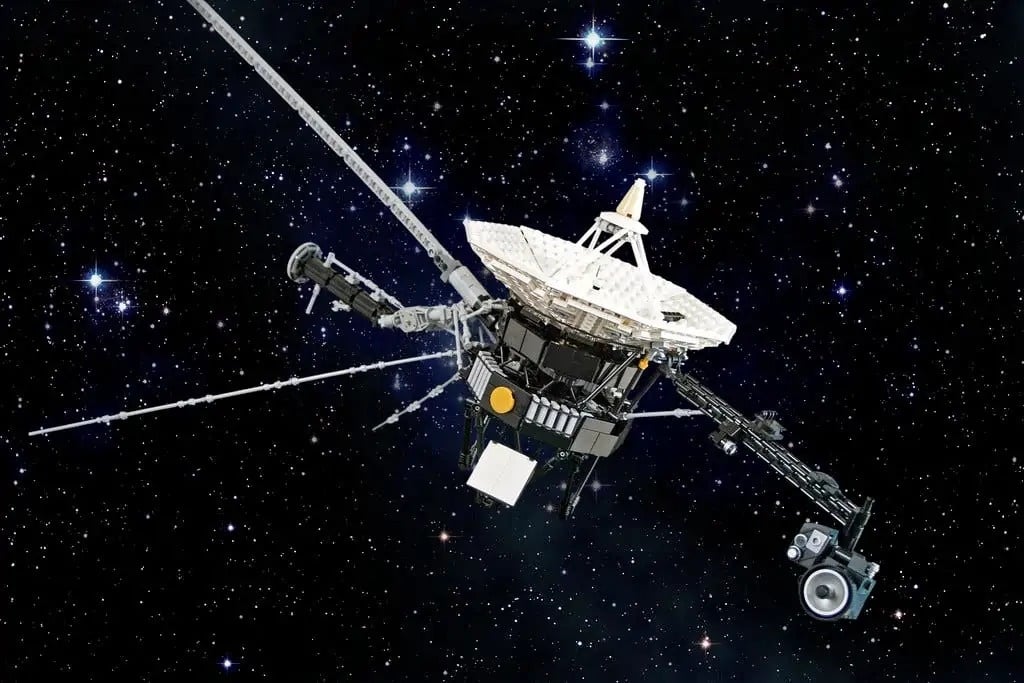










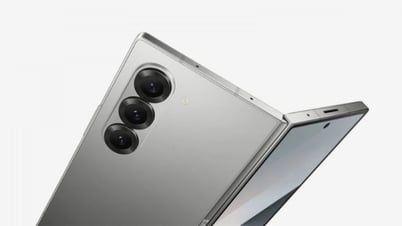






































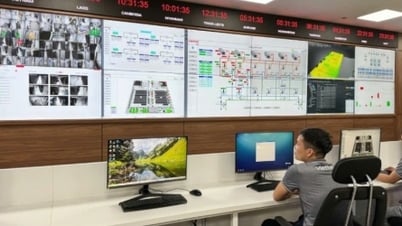














































Comment (0)